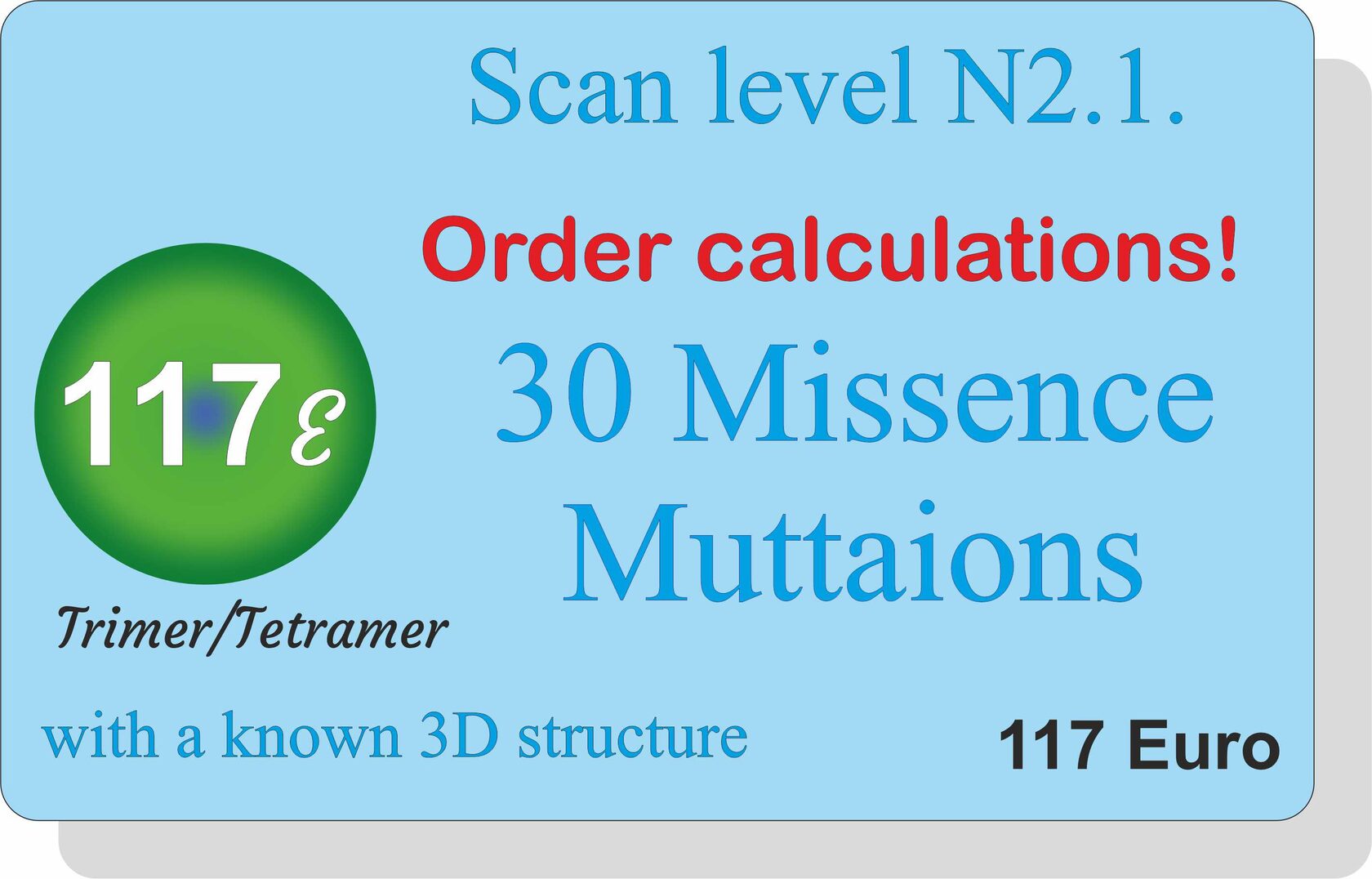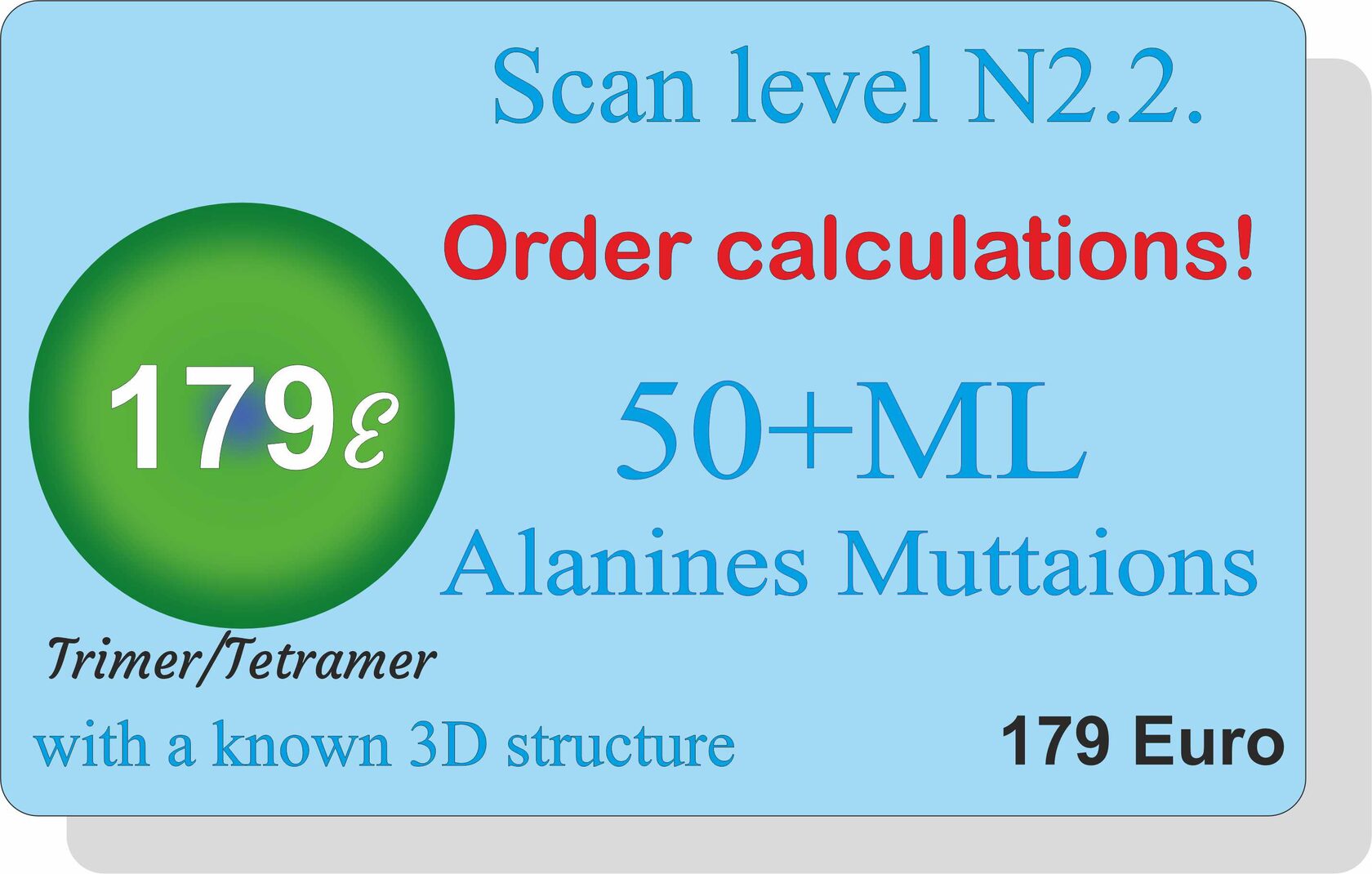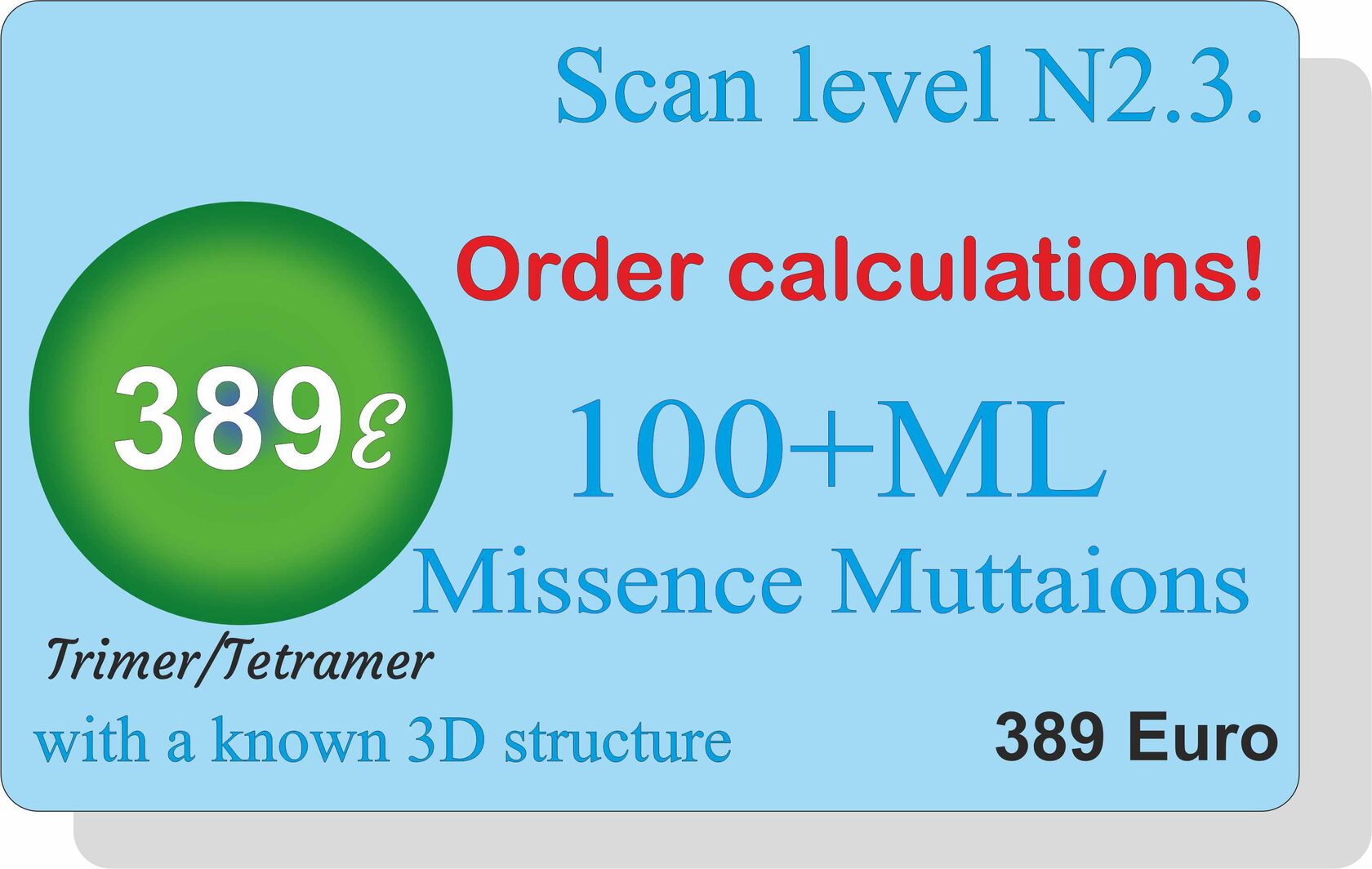Use AI to predict biochemical data
Soft, AI and Deep learning
applied to obtaining preliminary experimental data
applied to obtaining preliminary experimental data
Brief description of experimental approaches
Epitope Mapping: Alanine Scanning Mutagenesis
Epitope mapping elucidates the antibody function by identifying specific binding sites on the antigen that interact with the antibody. Alanine scanning mutagenesis is a commonly employed method for epitope mapping, involving the systematic substitution of individual amino acid residues to identify critical residues essential for antibody-antigen binding.
Description of the experimental procedure: Alanine scanning mutagenesis for epitope mapping involves substituting individual amino acids for alanine to identify the amino acid residues that play a role in antibody-antigen binding and other protein-protein interactions . Substituting with alanine removes all atoms past the β-carbon of the side chain, enabling the effects of individual alanine mutations to be used for identifying the roles of individual side chains. Mutant versions of the target antigen must be produced and purified, after which the binding is tested against antibodies for each mutant separately, to identify binding epitopes. Depending on the size and complexity of the target antigen, this could mean generating hundreds of different mutants. Residues whose mutation abrogates binding most severely are hypothesized to contribute to the binding epitope and paratope between the antibody and antigen.
analysis of binding interactions is typically conducted using ELISAs or Western blots, which are highly accessible and cost-effective technologies that do not require complex or convoluted data analysis.
analysis of binding interactions is typically conducted using ELISAs or Western blots, which are highly accessible and cost-effective technologies that do not require complex or convoluted data analysis.
Comparison of calculated and experimental data
You deserve to achieve great results!
You deserve professional confidence in the results you use. Enjoy your work using proven preliminary results.
Increase your productivity up to 86%. The use of modern technologies gives you this opportunity!
Increase your productivity up to 86%. The use of modern technologies gives you this opportunity!

Increase your productivity up to 86%
No extra costs or extra work in the lab. Use AI-generated results that correlate
with experimental results up to 86%.
with experimental results up to 86%.
Correlation between stability value lg(cond(W)) and experimental
Kd value:
R=0.869
Kd value:
R=0.869

Example of Dimer calculations
Binding affinities of peptides to Bcl-xL. Residues of Bak peptide substituted with alanine are in boldface.
Binding affinities of peptides to Bcl-xL. Residues of Bak peptide substituted with alanine are in boldface.

lg (Kd)
Calculated
Experiment
[Structure of Bcl-xL–Bak Peptide Complex: Recognition Between Regulators of Apoptosis]
Increase your productivity up to 93%
No extra costs or extra work in the lab. Use AI-generated results that correlate
with experimental results up to 93%.
with experimental results up to 93%.
Contribution of the charged residues of BAX to the binding affinity. BAX peptides (36-mer) with the alanine substitution of the indicated charged residues were titrated into BCL-2, and the deduced KD values are listed in the table. Shown in the bottom is the ITC run for the titration of the BAX peptide with the triple substitutions.


Calculated data
Experiment data
The correlation between calculated and experimental parameters reaches 93%
[Evidence that inhibition of BAX activation by BCL-2 involves its tight and preferential interaction with the BH3 domain of BAX]
AI cost for predicting biochemical experiment
Number of Substitutions:

up 100 Alanines
Perform alanine scanning of a large size monomeric protein with sequential replacement of amino acid residues in the polypeptide chain with alanine and obtain a set of changes in physical characteristics compared to the wild-type monomer.
Alaning scaning of large size monomeric protein
The length of the protein polypeptide chain is up to 1300 a.a.
Price:



Number of Substitutions in one protein:

up 10 Alanines
up 20 Alanines
up 50 Alanines
up 100 Alanines
Perform alanine scanning for dimer with sequential replacement of amino acid residues in one polypeptide chain with alanine and obtain a set of changes in physical characteristics compared to the wild-type monomer.
Perform an alanine scan of the polypeptide chain in one of the dimers with known 3D dimer structures
The length of the longest polypeptide chain is up to 1700 a.a.
up 100 Alanines
Price:




The same Price
Advantages of Alanine Scanning Mutagenesis
There are several advantages to alanine scanning mutagenesis for epitope mapping:
- Critical residue identification: Provides detailed information at the single amino acid level about the importance of specific residues in the binding interaction.
- Addresses energetics of binding interactions: By substituting individual amino acid residues with alanine, the changes in binding affinity can be measured between different mutants. This method enables researchers to identify and quantify the contributions of specific residues to the stability and strength of the protein-protein interaction.
You Don't have a 3D dimer structure?
We will assemble it for you!
We will assemble it for you!
We will select for you the 3D structures of each monomeric protein
Assemble the monomers into a dimer and create a contact surface.
Make several changes to the amino acid sequences.
You will receive a large amount of information as output, corresponding to various binding options between two monomers.
Assemble the monomers into a dimer and create a contact surface.
Make several changes to the amino acid sequences.
You will receive a large amount of information as output, corresponding to various binding options between two monomers.

Number of Substitutions
in one protein:
in one protein:

up 30 Mutations
up 50 Mutations
up 100 Mutations
Perform alanine/Missence mutations scanning for dimer with sequential replacement of amino acid residues in one polypeptide chain and obtain a set of changes in physical characteristics compared to the wild-type monomer.
Perform an alanine scan of the polypeptide chain with known 3D structures
The length of the longest polypeptide chain is up to 600 a.a.



Price:
Duration:
about Month
about 6 -8 weeks
about 8-10 weeks
You Don't have a 3D trimer and tetramer structures?
We will assemble it for you!
We will assemble it for you!
We will select for you the 3D structures of each monomeric protein
Assemble the monomers into a dimer and tetramers and create a contact surface.
Make changes to the amino acid sequences.
You will receive a large amount of information as output, corresponding to various binding options between two monomers.
Assemble the monomers into a dimer and tetramers and create a contact surface.
Make changes to the amino acid sequences.
You will receive a large amount of information as output, corresponding to various binding options between two monomers.

| |
Leave your request and our specialists will contact you shortly on all issues | Meet the group, explore the school, and get a free consultation |
Dimer or Trimer
Formation of Trimer (p53-p53-BCL-xL) with mutations that disrupt their interaction.
In the process of calculating trimers, tetramers and more complex structures, a step-by-step report on the assembly of such molecules into a single molecular complex will be offered to your attention
In the process of calculating trimers, tetramers and more complex structures, a step-by-step report on the assembly of such molecules into a single molecular complex will be offered to your attention
The influence of mutations on the order of formation of Trimer (or Dimer) +Zn atom


ITC assay demonstrated affinity of wild-type or mutant p53-DT to BCL-xL. The KD values indicate average of three independent titrations ± SEM. The relative binding affinity (Mutant/WT) is indicated [Structural insight into the molecular mechanism of p53-mediated mitochondrial apoptosis]


Mutations of interaction residues of p53 and BCL-xL disrupt their interaction.
Wild-type or mutant p53 plasmid was transiently transfected into p53-null H1299 cells. Cell lysates were immunoprecipitated using anti-p53 antibody, and subjected to western blotting as indicated.
Wild-type or mutant p53 plasmid was transiently transfected into p53-null H1299 cells. Cell lysates were immunoprecipitated using anti-p53 antibody, and subjected to western blotting as indicated.
p53 and BCL-xL disrupt their interaction
ZN-atoms
p53(mut)
BCL-XL
One of the calculation variants and an example of the correlation found between the calculated and experimental data.

a) Overall structure of p53/BCL-xL complex.
An asymmetric unit of p53/BCL-xL complex comprises two p53-DBD molecules (colored cyan and limon) and two BCL-xL molecules (colored magenta and wheat).
An asymmetric unit of p53/BCL-xL complex comprises two p53-DBD molecules (colored cyan and limon) and two BCL-xL molecules (colored magenta and wheat).
The complex formation of p53 and BCL-xL.
b) A surface model of the ternary complex composed of the p53 dimer and BCL-xL-C.
BCL-xL-C molecule inserted deep into the groove formed by the p53 dimer.
BCL-xL-C molecule inserted deep into the groove formed by the p53 dimer.
c) A surface model of the ternary complex composed of the p53 dimer and BCL-xL-D. BCL-xL-D molecule sits outside the groove formed by the p53 dimer
[Structural insight into the molecular mechanism of p53-mediated mitochondrial apoptosis]
Thus, the process of tetramer (pentamer, octamer) formation will be broken down into intermediate links of the biochemical chain, and thermodynamic characteristics will be calculated for each section of the biochemical reaction, as demonstrated in the short video below.
